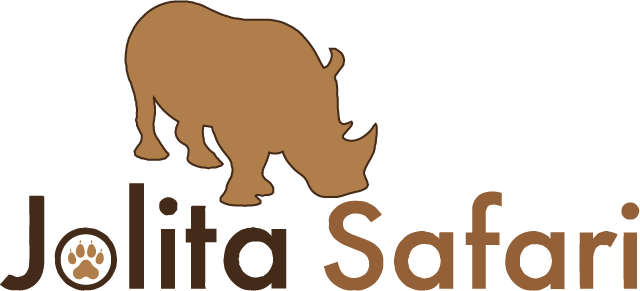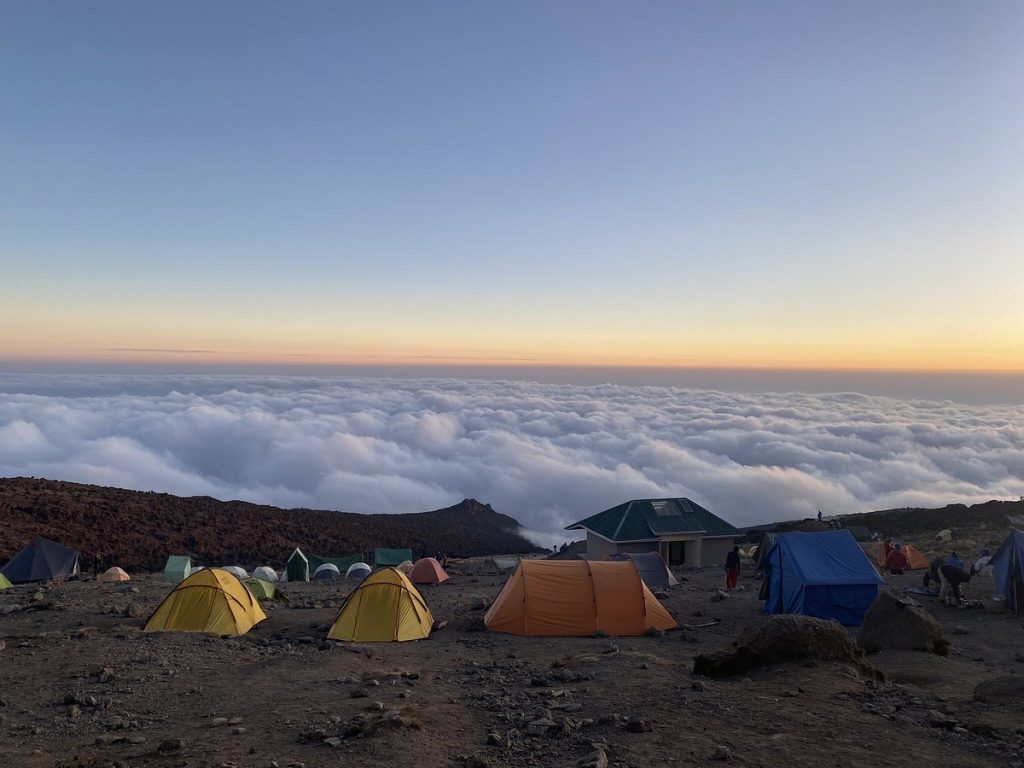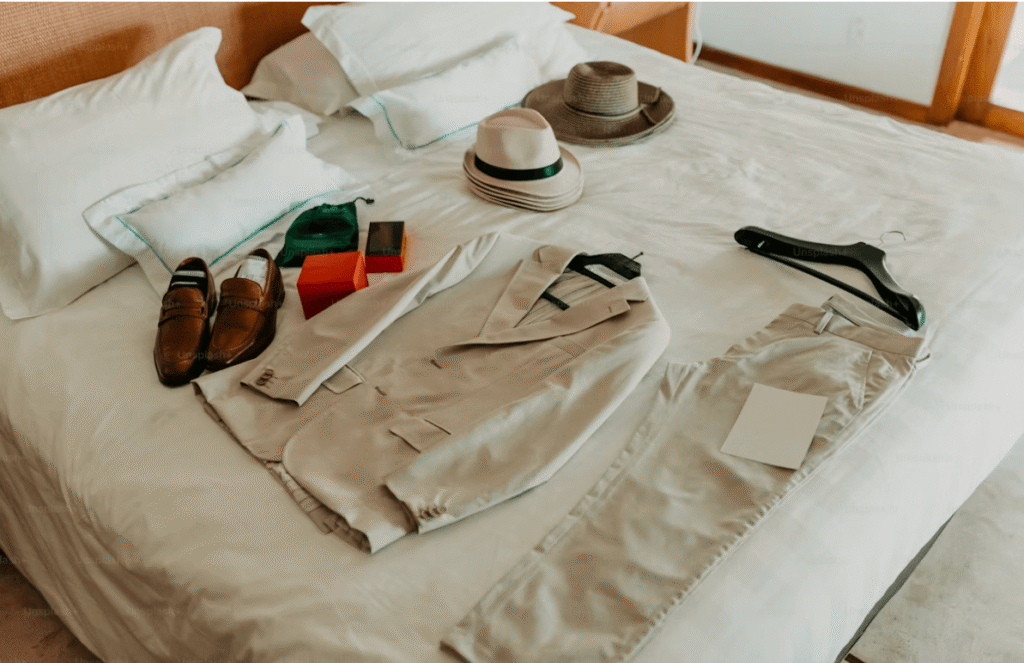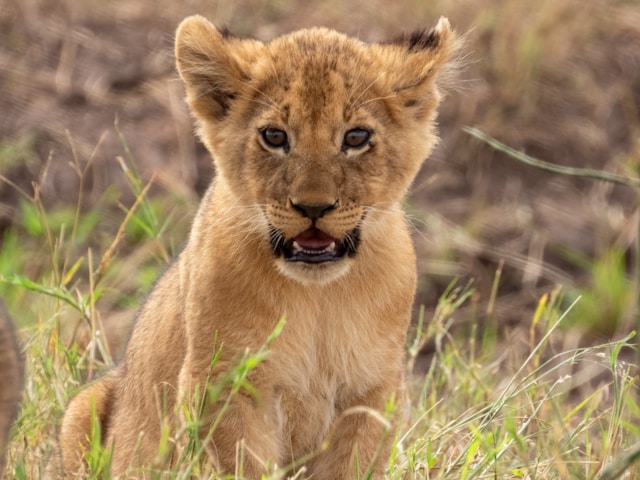BEFORE DEPARTURE
TRAVEL TERMS
Our travel terms form the basis of the agreement you make with Jolita Safari when you book a trip. Read our travel conditions .
PAYMENT FOR THE TRIP
Upon receipt of the order, we start booking your program. When the program is 100% confirmed, we send out a booking confirmation.
Together with the booking confirmation, an initial deposit invoice will be sent. Jolita Safari is NOT responsible for international flight tickets.
The amount is due for payment 14 days after the invoice date, unless the need to pay for plane tickets requires a shorter deadline.
The remaining amount is invoiced 60 days before departure and is due for payment 14 days after the invoice date. If the trip is booked 60 days or closer to departure, the full amount will be invoiced to the customer with due date within 14 days and sent together with the booking confirmation.
PASSPORT
It is the customer’s responsibility to ensure that the passport is valid, undamaged and meets the criteria for the journey. The passport must have a validity date of at least 6 months on the last day of travel. There must be at least 2 free pages in the passport. Check that there is no damage to the passport.
VACCINATION AND TRAVEL ADVICE
Contact your local vaccination clinic, health nurse or GP for vaccines.
TRAVEL INSURANCE
The customer is responsible for taking out travel insurance before departure. If you are going to stay at altitudes above 4,000 meters above sea level, you must check whether your insurance covers it. Take your insurance certificate with you on your trip.
CURRENCY
Take 2-300 US dollars with you. Visas are purchased on arrival or when passing through a border crossing and must be paid for in US dollars. Feel free to bring small bills such as 1, 5, 10 USD, these are fine to use for tips. Local currency can be withdrawn from ATMs in the cities, in rural areas it may be difficult to withdraw local currency.
DURING THE JOURNEY
BAGGAGE ON AIRPLANE
International flights
Baggage rules vary from company to company. Familiarize yourself with your airline’s baggage rules before departure.
Domestic flights
Baggage weight on domestic flights varies from 15 kg – 23 kg. Familiarize yourself with your airline’s baggage rules before departure. Make sure you have essential items in your hand luggage; passport, int. vaccination card, plane ticket, insurance, credit card, money, prescriptions, medicine, camera, binoculars and other high value items.
VISAS
Jolita Safari recommends that a visa be purchased on arrival in Kenya. Visa applications are granted on the plane or on arrival at the airports and at the border station. Cost of visa is 50 US$ (as of 01 January 2017) Visa cannot be paid with VISA or Mastercard, visa must be purchased in cash in US dollars. The customer is responsible for familiarizing himself with the country’s visa rules and visa costs before departure.
TRANSPORT
Your private guide, who is also a driver, will be standing with a name plate in the arrivals hall. It can often seem confusing and difficult to find your driver as there are many people with different nameplates, take your time and find your driver. We do not put other travelers in the same car as you, the safari is best when you travel with your family and friends.
The cars we use in Kenya are the 8-seater Toyota Hiace with 2-wheel drive, the 6-seater Nissan Urvan with 2-wheel drive and the 6-seater 4WD Toyota Land Cruiser. All cars are equipped with safety belts, radio communication, safari hatch, drinking water and you have a skilled driver during your stay. Several of our cars have sockets and charging options.
SAFETY
Jolita Safari, partners, our tour leaders and local guides will use their experience and knowledge to avoid accidents. Jolita Safari cannot guarantee that unfortunate situations cannot occur. You are visiting a country with a foreign culture and as a participant on our tours you must show respect and not behave reprehensibly or rudely. A journey to a country in Africa means that the traveler must accept a different reality than in our Western world.
During the trip, you are obliged to comply with the rules and regulations issued by the public authority, the organizer or the organizer’s representatives, including the rules and regulations that may have been issued by the individual hotel, lodge, transporter, etc. Rule changes may occur without Jolita Safari having received opportunity to inform you as a traveller.
FOOD AND DRINK
The days you are on safari always include breakfast, lunch and dinner. The food at the accommodation is of a high standard, but it is still good to take precautions. The food we eat locally is well cooked and or fried, and thus safe to eat. Wash your hands before meals. Drinking water must be boiled or bought bottled.
In most accommodation it is customary to serve buffet meals. The buffets tend to contain both gluten-free and vegetarian options.
If you require a special diet during your stay, please inform us of this when booking. All beverages are paid for by the customer directly on the spot unless otherwise agreed.
TIPS
Tips are part of the culture in Kenya. Although tipping is voluntary, it is expected that you tip in various situations to thank for good service and a job well done. We recommend that you tip your safari guide on the last day when you leave him at the airport. Remember that tips should reflect the work done. Most hotels/lodges/campers have a “tip box” at the reception. Tips are then distributed to everyone who works on site. Usual tip on safari days is US$10 per person per day.
PAYMENT LOCALLY
The currency in Kenya is the shilling (KES). 1 USD $ is worth 129 Kenyan shillings as of 1 January 2024. Click here for updated rates.
The most common credit cards are becoming more and more accepted, but still bring some cash in dollars, as a start. In the cities, you can withdraw shillings with a credit card in an ATM terminal. In the countryside and in the parks there are no opportunities to withdraw cash, so it is important to bring cash when traveling from the cities.
Most accommodation and restaurants accept payment with VISA and Mastercard, often with a 5% fee. It is also possible to use US dollars as payment. A good rule of thumb is to pay in the currency the price is stated in. When using another currency, a poor exchange rate is often used.
LANGUAGE
The official languages in Kenya are English and Swahili. At hotels and tourist attractions, English is used. There are a total of over 40 tribal languages in Kenya.
LOCAL CUSTOMS AND DRESS
The regular Kenyan is perceived as positive, helpful and outgoing. When you meet a Kenyan, it is customary to shake hands, and then follow a small greeting ritual “How are you, your family” etc. It is not usual to introduce yourself until after you have exchanged greetings. Brash behaviour, visible drunkenness, swearing/bad language and disrespectful accusations can be taken very seriously – especially by the older generation. As a tourist, it is therefore important to be aware that parts of the mainland Muslim community. Tourists should be careful to follow the dress code and avoid drinking alcohol in places other than restaurants that are licensed to serve alcohol. Special precautions should be taken during Ramadan. When moving in public places, women should always wear clothes that cover their shoulders, knees and navel.
CLIMATE
The climate can roughly be divided into 3 zones. Along the coast, the outlying islands and the area around the Great Lakes, there is a hot and humid tropical climate; often with humidity of up to 90%. The high plains have a temperate climate, with temperatures down to 15 degrees at night and even lower the higher you go above sea level. Low-lying plain areas inland have a hot and dry climate.
The warmest time is November to March with variations from approx. 25 to 35 degrees. There are two rainy seasons in Kenya; a short rainy season in the period from November to January and a long rainy season that starts in April and lasts until May. In the short rainy season, there is more sporadic rainfall, only short showers, while there is heavy rainfall combined with thunderstorms in the long rainy season, most rain in April.
ELECTRICITY
Most lodges and campers are not connected to the usual electricity grid, they then use solar cells and generator power. The generators are often only used for a few hours in the morning and in the evening, which means that there may be limited time to charge mobile phones and cameras.
Current voltage is 220 Volt, with 3-pin sockets. There may be some voltage variations and sometimes power outages. Where there are no charging facilities in the room/tent, in most cases it will be possible to charge at the reception. Several of our cars have sockets and charging options while you are out and about.
MOBILE COVERAGE
GSM coverage in Kenya is relatively good. Most national parks have good coverage. However, there may be some “pockets” without coverage.
GEOGRAPHY AND ENVIRONMENT
The landscape in Kenya offers great variety. From savannah landscape in the south, to tropical rainforest in the west and desert in the north. The country rises from the coast in the east to higher plains and hills in the west. Across the country, in the sky direction north-south, the Rift Valley stretches. The savannah in the south is home to elephants, lions, giraffes, zebras and antelopes. Most of the people in Kenya live in the rolling hilly landscape in the central and western areas. The country is also known for Lake Turkana, one of the world’s largest permanent desert lakes, and Mount Kenya – an extinct volcano and Africa’s second highest mountain.
HISTORY
Kenya is a fairly young democracy. Arab traders were the first to settle in the country, along the coast, in the 7th century. The Arabs remained in the country, and met a people who were organized in small village communities. In the 16th century, the Portuguese came and invaded the towns along the coast. The interior was still left in peace for Western imperialism, while the coast became an important center for the slave trade and merchandise trade. In the 19th century, the English first conquered the coast, and later also the inland, where they established trading stations and plantations. In the period from 1920 to 1963, Kenya was a British colony, and the local population was heavily oppressed. Only whites could own land, and the blacks lacked basic rights.
Beyond the 1940s, a liberation movement arose which fought for equal treatment. In 1952, a full-scale rebellion broke out, and the country was thrown into political chaos that lasted until the end of the 1950s. Kenya became independent in 1963. For the first 15 years, the country was ruled by the socialist liberation leader Jomo Kenyatta. His message was clear: national reconciliation and growth. Throughout Kanyatta’s reign, criticism of his leadership increased. The opposition claimed that a few became richer at the expense of the great majority. When Kanyatta died in 1978, Vice President Daniel Arap Moi took power. At first there was more openness and room for criticism, but over the course of the 1980s he became increasingly harsh towards his critics. Gradually, the regime’s violations of human rights attracted stronger international criticism. Moi introduced a one-party system, and poverty increased along with corruption.
In the 2002 election, the ruling Kanu party lost power for the first time. Instead, Kenya got a collaborative government with Mwai Kibaki as president. The economy got a boost, but tensions were high in the chaotic government alliance. Apparently the unrest began after the 2007 election. The president, parliament and municipal councils were to be elected on the same day. Kenya is a typical presidential country. The president is the head of state, head of government and has a lot of power according to the constitution. The election was between three candidates; Kibaki – incumbent president, and challengers Odinga and Musiyoka. The election divided the population in two. The vote count for the incumbent president was systematically falsified and adjusted upwards. When the final result of the presidential election was announced in a closed room where only the state broadcaster was present, the “adjusted” figures showed that Kibaki had “won” by a narrow margin. Odinga claimed that Kibaki “stole” the election victory by cheating and wanted a recount of the votes first. Kibaki’s camp, for its part, claimed that the election had gone smoothly and that if anyone was dissatisfied, they had to go to court. From an ethnic point of view, Kibaki is supported by his own numerous ethnic group, the Kikuyu, as well as the closely related Embu and Meru peoples. These groups mostly live in the Central Province and around Mount Kenya. After the election, the Kamba people who in the presidential election supported their own candidate, Musyoka, joined Kibaki when Musyoka was given the vice-presidential position. Ethnically, the opposition comprises the people groups in the west of the country: Luo, Luhya and Kalenjin. Odinga also has considerable support on the coast and in the North-East Province. The opposition is also strong in all the biggest cities.
The extensive exercise of violence after the 2007 election was not only a spontaneous reaction to what was perceived as electoral fraud, but partly a planned campaign to play the ethnic card on Odinga’s part, and to plan unrest in the event that Kibaki won the election. On the other hand, attacks by Kikuyu militias supporting Kibaki were planned in Naivasha and Nakuru – and violence was perpetrated against other ethnic groups. The police and its special squads also contributed to the killing of over 1,000 people after the 2007 elections; over 300,000 were displaced from their homes. Government spokesmen accused Odinga’s supporters of being behind organized ethnic cleansing, while Odinga accused the government of being behind genocide. Violent clashes between Kikuyu and Luo militias have also resulted in a struggle for control of criminal activities, e.g. liquor trade. Several legal proceedings are now taking place to prosecute what happened in the aftermath of the 2007 election.
The 2013 election was peaceful and Uhuru Kenyatta, son of the country’s first president, emerged victorious. Since 2011, Kenya has been part of the African Union’s forces in Somalia, to overcome the threat from Al-Shabaab. From 2013, it has been experienced that Al Shabaab has carried out attacks within Kenya’s borders.
SOCIETY AND POLITICS
Kenya has a republican form of government where the president heads the government and is the formal head of state. The party system in Kenya is unstable, if one can talk about a proper party system at all. It is very easy to create a batch and get it registered. There are a myriad of registered parties, approximately 130. Cooperation is constantly being formed across the parties, which often breaks up, especially in the run-up to elections.
The election system is such that the candidate who receives the most votes is elected. In other words, an absolute majority is not required, i.e. 50% of the votes or more. To become president, one must also be elected as a member of parliament. In addition, one must have at least 25% of the votes in 5 of the 8 provinces in the country. The last requirement is intended to ensure a certain geographical and thus also ethnic representation in the power apparatus.
The ethnic settlement pattern often coincides with geographical divisions. The Luo people live mainly around Lake Victoria, while the Kikuyu people who live in the Central Province. The Luhya live in the west towards the border with Uganda, while the Kalenjin live in the Rift Valley.
The ethnic antagonisms have historical roots going back to the colonial era under Great Britain. White settlers settled in the best agricultural areas with the protection of the colonial state and displaced the original population. After independence in 1963, they were “redeemed” with British aid money. The new government under Jomo Kenyatta – a Kikuyu – ensured that many people got their land back, but in that process there was also a lot of corruption. This led to the economic and political elite acquiring large landed properties.
As much as 80 percent of the country is semi-desert. About half of the arable land is owned by 20 percent of the population. Approx. 13 percent are landless. In a country where the vast majority live from agriculture, access to land is therefore a difficult political issue in today’s Kenya. Daniel arap Moi – a Kalenjin – who took over the presidency in 1978 after Kenyatta’s death, did little to redistribute land. The same applies to Kibaki during his reign. None of the political leaders after independence have tried to deal with the land issue in a way that could mitigate the contradictions.
But it is not just about the distribution of land holdings. The state receives tax money which is distributed more or less fairly. Being employed by the state is important because they give influence over the distribution of these resources. Through the state, resources can be channeled to areas that have previously been neglected, or to areas that have previously been favoured. Money usually goes to schools, roads, health centers and the like in the areas where the top managers come from. It is perceived as unfair. And when it is experienced systematically over a long period of time, bitterness and anger build up. There is no doubt that the Luo people feel bitter at having been let down repeatedly.
ECONOMY AND TRADE
The vast majority of Kenyans work in agriculture. Among the most important goods produced for export are tea and coffee. Kenya’s dependence on agriculture has left the country vulnerable to erratic rainfall and fluctuations in prices on the international trade market. Large parts of the country’s population live below the poverty line, despite the fact that the political elite raises wages to the level of the Western middle class. Kenya is a poor country, and is completely dependent on international aid. In the early 1990s, the country entered an economic crisis due to the government’s mismanagement, and the World Bank and the International Monetary Fund entered the country with large loans and programs. However, the organizations stopped the support when Kenya was unable to meet the obligations that came with the loans. In the period after 2002, the economy has slowly but surely begun to recover from the long downturn. Corruption and lack of modernization of the industry still constitute major obstacles to the country’s further economic development.
Tourism to the famous national parks adjacent to the savanna is Kenya’s most important source of foreign money. Kenya is also an important intermediate country for trade with neighboring Uganda, Rwanda, Burundi, DR Congo and South Sudan.



